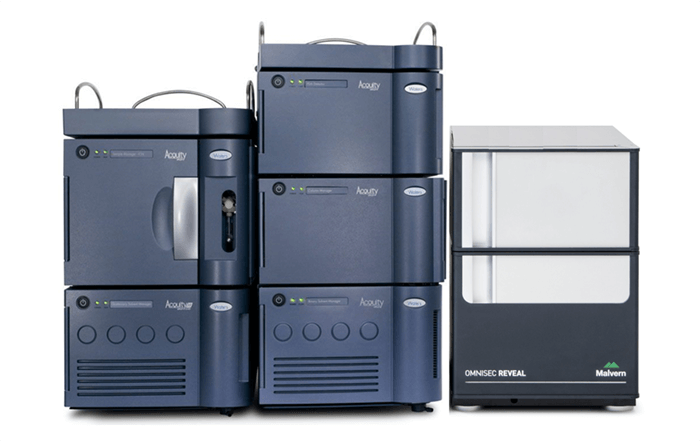Abstract
In this application note, two low molecular weight polymers, a polystyrene and a polycaprolactone, were analyzed using the OMNISEC REVEAL and Waters ACQUITY APC in combination to demonstrate the power of comprehensive characterization by multi-detection together with the speed, efficiency and resolution of APC.
Introduction
Gel permeation / size exclusion chromatography (GPC/SEC) has been and remains the ideal analytical technique for analysis of polymer molecular weight. Over the years, developments in detector technology have allowed users to go from obtaining relative molecular weight by using a single concentration detector to complete molecular characterization with absolute molecular weight by adding viscometer and light scattering detectors, among others. Those detector advancements, however, were not accompanied with similar improvements to enhance resolution and reduce the column volume, sample quantity, and time required for analysis until the recent emergence of Advanced Polymer Chromatography™ (APC™). The Waters ACQUITY Advanced Polymer Chromatography (APC) system applies the advantages of Ultra-Performance Liquid Chromatography (UPLC®) to the polymer market for relative molecular weight analysis. The introduction of this product allowed for more efficient size separation to deliver relative molecular weights based on column calibration.
Recently, Malvern Panalytical introduced a version of the OMNISEC REVEAL advanced detector unit that has been optimized for use under APC conditions and, through a collaboration with Waters, has brought advanced detection to APC analysis.

One of the hallmarks of APC is excellent resolution of low molecular weight samples, and one of the features of OMNISEC REVEAL is the sensitivity of its light scattering detector, especially for low molecular weight samples. In this application note, two low molecular weight polymers, a polystyrene and a polycaprolactone, were analyzed using the OMNISEC REVEAL and Waters ACQUITY APC in combination to demonstrate the power of comprehensive characterization by multi-detection together with the speed, efficiency and resolution of APC.
Methods
One polystyrene sample and one polycaprolactone sample, both low molecular weight, were analyzed using an ACQUITY APC-REVEAL system with a mobile phase of THF. Each sample had a specific set of analysis conditions which will be detailed accordingly.






